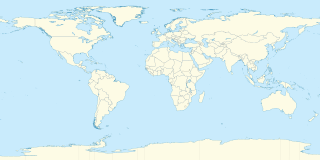This article possibly contains original research .(May 2008) (Learn how and when to remove this template message) |
This is a list of the extreme communities in Canada and its provinces and territories. They are farther east, north, south or west than any other community, though they are generally not farther than the extreme points of Canadian provinces. The record latitude (in degrees north) or longitude (in degrees west) is given.
This is a table of extreme points of each of the provinces and territories of Canada. Many of these points are uninhabited; see also extreme communities of Canada for inhabited places.
| Area | North | West | South | East | ||||
|---|---|---|---|---|---|---|---|---|
| Canada | Alert, Nunavut | 82°29′50″ | Beaver Creek, Yukon | 140°52′46″ | Pelee, Ontario | 41°46' 0.12" | St. John's, Newfoundland and Labrador | 52°39′26″ |
| British Columbia | Lower Post [1] | 59°55' | Pleasant Camp | 136°27' | East Sooke | 48°21' | Corbin | 114°29' |
| Alberta | Indian Cabins [2] | 59°52' | Cherry Point | 119°57' | Coutts | 49°00′23″ | Lloydminster* | 110°00′ |
| Saskatchewan | Waterloo Lake | 59°38' | Lloydminster* | 110°00′ | West Poplar | 49°00'08" | Fertile | 101°27′02" |
| Manitoba | Nunalla | 59°55' | Flin Flon** | 101°51′ | Emerson | 49°00'43" | Shamattawa | 92°05' |
| Ontario | Fort Severn | 56°00′37″ | Ingolf | 95°07' | Pelee, Ontario | 41°46' 0.12" | Curry Hill | 74°23' |
| Quebec | Ivujivik | 62°25′0″ | Pointe-Piché | 79°31' | Elgin or Hinchinbrooke*** | 44°59′30″ | Blanc-Sablon | 57°07' |
| New Brunswick | Dalhousie | 48°03' | Connors | 68°49' | White Head | 44°37' | Cape Tormentine | 63°47' |
| Prince Edward Island | Seacow Pond | 47°01' | West Cape | 64°24' | High Bank | 45°58' | East Point | 61°58′ |
| Nova Scotia | St. Paul Island (uninhabited) | 47°12′10″ | Westport | 66°21′06″ | The Hawk | 43°23′30″ | Main-à-Dieu | 59°51′ |
| Newfoundland and Labrador | Nain | 56°33′02″ | Labrador City | 66°55′13″ | St. Shott's | 46°37′41″ | Blackhead, St. John's | 52°39′26″ |
| Yukon | Old Crow, Yukon [3] [4] Pauline Cove (last permanent residents left in 1987) | 67°57′ (Old Crow) | Beaver Creek | 140°53' | Contact Creek | 60°00' | Contact Creek | 127°43' |
| Northwest Territories | Sachs Harbour | 71°59′ | Aklavik | 135°0′ | Fort Smith | 60°00′ | Łutselk'e | 110°44′ |
| Nunavut | Alert | 82°28′ | Kugluktuk | 115°09′0″ | Sanikiluaq | 56°32′ | Qikiqtarjuaq | 64°02′ |
*Lloydminster lies on the Alberta/Saskatchewan border. Farthest east entirely within Alberta is Empress (110°0′22″W). Farthest west entirely within Saskatchewan is Govenlock in the southwest part of the province.
**Flin Flon lies on the Saskatchewan / Manitoba border, however, the southeastern part of Saskatchewan is located much further to the east than Flin Flon.
**The Canada-US border bends below 45°N in the region; the very southernmost point is where the Châteauguay River crosses the border.

Empress is a village located along the Alberta/Saskatchewan border; in southern Alberta 121 kilometres (75 mi) north of Medicine Hat. The town was named, in 1913, for Queen Victoria, who was also Empress of India. In the past it was known as the "Hub of the West", connecting major cities together by the Canadian Pacific Railway.








